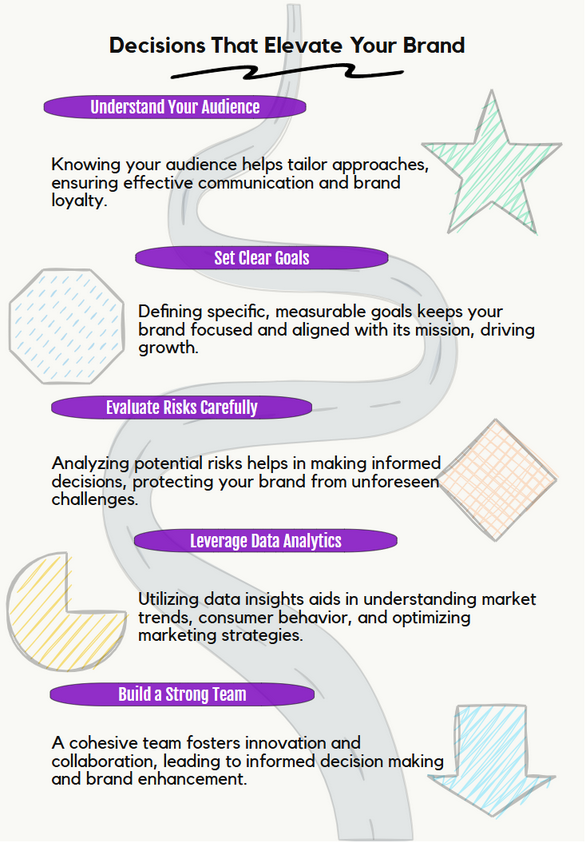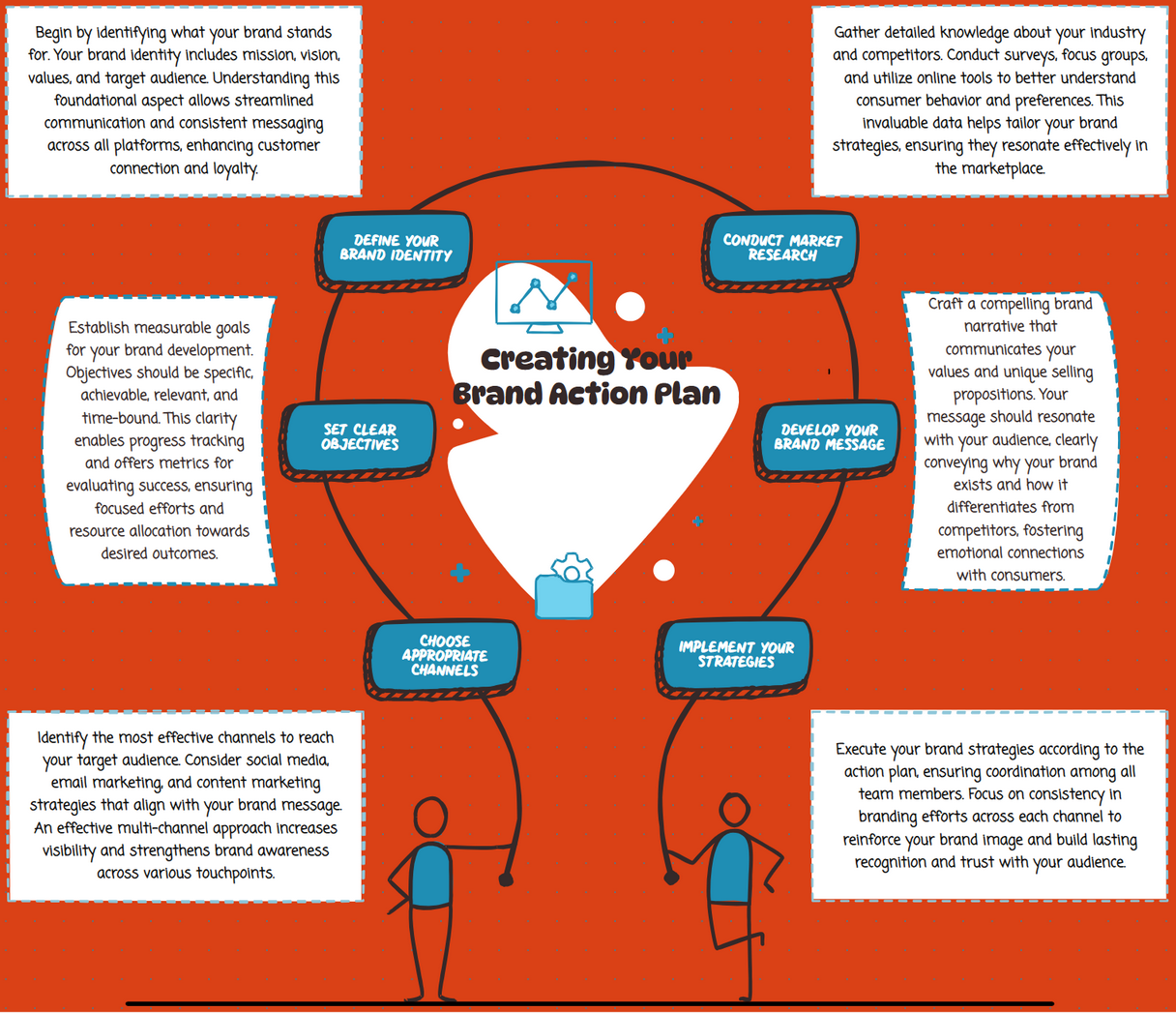
Discover how to reinvent your personal brand with proven strategies. Acquire networking, leadership, and decision-making skills to transform your career.
Table of Contents
Introduction
Personal branding is a vital component of professional development. If you’re considering a brand overhaul, you’re not alone. Many of us reach a stage in our work where our current image no longer reflects our potential or the progress we’ve made. Personal branding is more than just a polished LinkedIn profile – it’s a comprehensive strategy that can unlock new opportunities for you.
Rebranding yourself is not a simple task and should take time, personal reflection, and substantial action. If you’re transitioning to a new career, seeking to advance in your field, or want to be viewed in a new light, this guide will show you how to do it step by step.
How to Reinvent Your Personal Brand: Effective Strategies for a New Public Image
Changing how people see you takes time and effort, but it’s possible with the proper steps. Start by determining what kind of image you want to create and what makes you unique or different from others. Clean up your social media accounts by removing old posts that no longer align with your new goals, and start sharing content that genuinely reflects who you want to be. Update your photos, write new descriptions about yourself, and make sure everything looks professional and consistent across all platforms.

Understanding Your Current Brand
Before you can reimagine your brand, you need to know what your brand is. Many people claim they don’t have a personal brand, but that’s not entirely accurate. Everyone has a personal brand; it just depends on the image they project in a professional capacity.
Conducting a Brand Audit
Begin with the following essential questions:
- What do your colleagues say are your best work qualities?
- In meetings, how do you come across today?
- What kind of reputation do you have in your industry?
- What are your known professional skills?
- What are your major professional weaknesses?
Gathering Feedback from Others

Blind Spot Identification Through Authentic Conversations
Most people assume feedback is about strengths and weaknesses, but the real value lies in uncovering blind spots – aspects of your personality and professional presence that you’re entirely unaware of. When you engage in structured feedback conversations, others reveal unconscious habits, communication patterns, and leadership styles that either enhance or undermine your brand. These insights are impossible to discover through self-reflection alone and often represent the most significant opportunities for brand transformation.
Ask trusted peers, mentors, and friends for candid feedback on your professional presence. Ask specific questions like:
- “What are three words that you would use to describe my professional strengths?”
- “What’s the quality or accomplishment for which I’m best known at work?”
- “Where do you feel I could best develop?”
That feedback is the basis of your brand reinvention plan. Record these answers and notice patterns – whether in the right or wrong direction.
Analyzing Your Digital Footprint
Therefore, your online presence constitutes a significant part of your brand. Google yourself and find out. Review your social media networks, professional websites, or content you’ve published. Could you let me know if you are presenting the right professional image online?
Why Personal Brand Reinvention Matters
Understanding the significance of personal brand reinvention can be a game-changer for your professional reputation. It not only influences your career and earnings potential but also enhances your job satisfaction levels. A robust personal brand can open doors to:
Career Advancement Opportunities
Employers promote folks they know and respect. When you have a proactive, positive personal brand, you’re more likely to be tapped for leadership opportunities and special projects, position yourself for promotion, and get a leg up in your job search, and to ensure a successful job search. Your reputation is your most significant career asset.
Increased Professional Visibility
A strong personal brand improves your visibility in your industry. They remember you after meetings, recommend you for opportunities, and reach out to you when new positions become available. In competitive professions, this visibility is crucial.
Better Networking Results
Networking is much easier when you have a solid personal brand. People know who you are and what you bring to the table. This clarity enables you to establish deeper professional relationships and makes it easier for others to support you in achieving your goals.
Developing Essential Leadership Qualities
Leadership qualities play a pivotal role in shaping a strong personal brand. Even if you’re not in a supervisory role, demonstrating leadership potential can set you apart and showcase your value to employers and coworkers.
Communication Skills
Good communication is the bedrock of good leadership. This includes:
- Active listening: Paying attention to what others are saying
- Speaking clearly: Stating your thoughts simply, so that they are comprehensible
- Writing: Professional email and clear documents
- Presentation: Confidence in speaking in meetings / public platform
Practice these skills daily. If you’re not a confident speaker, consider joining a Toastmasters group in your community or taking online courses to develop your public speaking skills.
Also Read About Remote Communication Tools
Problem-Solving Abilities
Leaders are supposed to solve problems, not create them. Develop your problem-solving skills by:
- Coping with Chronic Illness in a Positive Way
- The ability to break big problems into smaller, more manageable ones
- Thoroughly studying solutions before proposing them
- Learning from mistakes and failures
Emotional Intelligence
The management of emotions – both your own and those of others – is a crucial element of effective leadership. Work on:
- Self-awareness: Understanding your emotional triggers
- From Elite to Not: How Self-Regulation Can Affect Elite Athletes And The Rest Of Us
- Empathy: Understanding how others feel
- What You’ll Need: Soft skills: Relationship-building in the workplace
Building Strategic Networking Skills
The concept of networking is frequently misconstrued as simply amassing business cards or more LinkedIn connections. Real networking is not about potential prospects; it’s about actual relationships that are mutually beneficial.
Quality Over Quantity
Instead of trying to meet everyone, concentrate on getting to know a small number of people well. A handful of strong professional relationships are worth far more than hundreds of weak connections.
Giving Before Receiving
The best networkers are givers. Look for ways to:
- Share valuable information with others in your network.
- Introduce People Who Should Know Each Other
- Provide value by applying your skills and knowledge to help people address their challenges.
- Promote others’ work and achievements
Following Up Consistently
Many people meet great contacts but never follow up. Make it a habit to:
- Send a post-meeting follow-up message to someone within 24 hours of meeting them
- Chat with your new network regularly, particularly when you don’t want something.
- Recall information about people and inquire about it
- Pass along interesting articles or opportunities to the members of your network
Expanding Your Network Strategically
Network outside of your current industry or company. Expand your network by:
- Attending industry conferences and events
- Joining professional associations
- Joining online groups or forums relevant to your industry
- Work as a volunteer for causes that you love
- Attending classes or workshops to network with similar professionals
The Power of Decision Making in Growing Your Brand
Decisiveness is an essential trait of a leader and an integral part of your brand. Those who can make quick and confident decisions are respected and trusted by others.

Developing a Decision-Making Framework
Develop a decision-making system that considers the following factors.
- A well-defined problem: Just what is the decision about?
- Collect facts: What information should you establish?
- Think about your options: What are your options?
- Consider the implications: What’s the best thing to happen in each of our options?
- Decide: Pick the better of the two with the given information.
- Take action: Implement your decision.
- Review the results: Takeaways from the outcome.
Making Decisions Under Pressure
In the professional world, quick decisions are often required. Practice these skills:
- Use your intuition, but be reasonable.
- These days, better to choose a good option quickly than for a perfect choice to reveal itself too late.
- And learn how to say “I don’t know” when you don’t have enough information
- If you are misinformed, be flexible enough to change direction.
Building Confidence in Your Decisions
Trust in experience and good preparation. Build your decision-making confidence by:
- Starting with smaller, lower-risk decisions
- Learning from good and poor decisions
- Asking other people for ‘advice’ on YOUR decision-making process
- Researching how leaders in your field make decisions.
Enhancing Your Negotiation Abilities
The skill of negotiation is crucial for career advancement, salary discussions, project management, and even the daily operations within the workplace. Practical negotiation skills demonstrate your ability to advocate for yourself and your team while maintaining a respectful tone.
Understanding Different Negotiation Styles
Different people have different styles when it comes to negotiation:
- Competitive: Focused on winning
- Collaborative: Dedicates itself to finding solutions that work for all parties concerned.
- Accommodating: Focused on maintaining relationships
- Compromise: A commitment to searching for middle roads and third ways.
- Avoiding: Focused on preventing conflict
The very best negotiators have a style they can flex to the situation and the people involved.
Preparation for Successful Negotiations
The art of negotiation is as much preparation as competition:
- Investigate what the other party needs and what limitations they face.
- Take a moment to consider what your position and preferred result would look like
- Prepare multiple options and alternatives
- Rehearse your bullet points and the responses to likely objections
- Consider the bigger picture of what motivated and led to outside forces.
Building Win-Win Solutions

Brand Consistency Builds Predictable Reciprocity
Consistent personal branding fosters predictable patterns of interaction, enabling others to invest in long-term relationships with you. When people know what to expect from your values, communication style, and follow-through, they’re more likely to propose mutually beneficial arrangements. This predictability reduces transaction costs and relationship risks, making collaborative solutions more attractive than competitive alternatives.
The ideal negotiation provides value to all parties. Focus on:
- Knowing what both sides need
- Seeking creative solutions that satisfy everyone’s fundamental interests
- Having items valuable to others, but that you’re not attached to selling/trading
- Dating for the long term while pursuing your goals
Creating Your Brand Action Plan

Creating a brand action plan to reinvent your brand is like building a roadmap to take control of your narrative. Start by taking an honest look at how people perceive you now and identify the changes you want to make. Consider what makes you unique – perhaps you’re exceptional at problem-solving, incredibly creative, or always ready to lend a helping hand.
Identifying Your Unique Value Proposition
What is unique about what you do? The special thing about you might be:
- Specific skills or expertise
- Unique experiences or background
- Your approach to solving problems
- Your personality and work style
- Your industry knowledge or connections
Creating Your Brand Message
Craft a simple, strong, and consistent message to communicate who you are and what you do. This should be:
- Easy: Well, easy to read and remember
- Genuine: Real to who you are.ReLU.
- Relevant: Useful to your target audience
- Homogeneous: Uniform across all platforms and interactions
Practice communicating your brand message across various formats, ranging from a 30-second elevator pitch to a lengthy conversation.
Digital Presence and Online Branding
“It takes 20 years to build a reputation and five minutes to ruin it. If you think about that, you’ll do things differently.” – Warren Buffett
Most people focus on creating perfect posts and content. Still, your digital presence is defined by small, consistent interactions—how quickly you respond to comments, the tone of your replies, and even your reaction patterns to others’ content. These micro-interactions create a subconscious impression that often outweighs the impact of your main content. Brands that master this appear more authentic and approachable, building stronger emotional connections with their audience.
Measuring Your Brand Transformation

Brand Transformation Success Requires Measuring Competitor Response Patterns
Effective brand transformation measurement includes tracking how competitors react to your changes. This involves monitoring shifts in competitor messaging, pricing adjustments, marketing campaign pivots, and product positioning changes that directly respond to your transformation efforts.
Track these brand indicators of improvement:
- Blossom Your Networking: Are You Networking with the Right Individuals?
- Engagement: Is there a reaction from the public to your content and messages?
- Opportunities: Are you being asked to work on better projects and placed in better positions?
- Feedback: What are people saying about your development professionally?
- Visibility: Are you getting mentioned, quoted, or recommended more frequently?
Conclusion
Discovering how to resurrect your brand can be a long-term process. It doesn’t happen overnight, it’s not easy, and it requires consistent patience and strategy. The secret is to cultivate genuine leadership, genuine professional relationships, and to remind yourself of your worth regularly.
And most importantly, remember that personal branding isn’t about fabricating an image; it’s about genuinely portraying your best professional self. By honing your decision-making, improving your negotiation skills, and bolstering your online presence, you can establish yourself as a personal brand that opens doors and attracts most opportunities.
The best personal brand reinventions are built slowly over time. Suppose you are running a small number of consistent actions to create momentum. Instead, strive to be a real force for others, continue to grow, and honor your values.
What will you do today to start rebranding yourself? Choose one domain from this guide and commit to steady improvement. Your future will thank you for the time and effort you spend developing your professional reputation now.
Want to use personal branding to take your career to the next level? The first step is to conduct a brand audit and set clear goals for where you want to be. It takes just one step to strengthen your brand.
